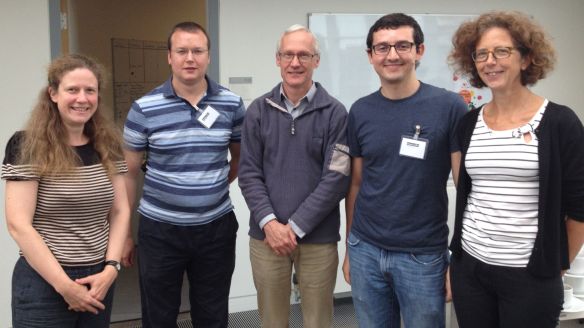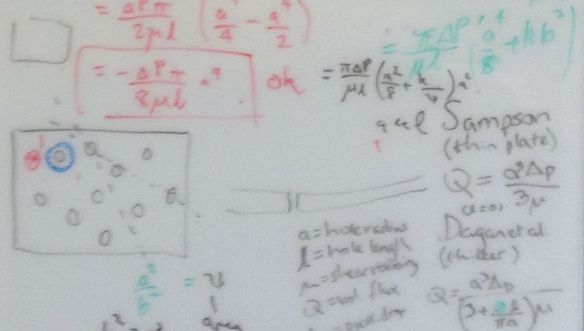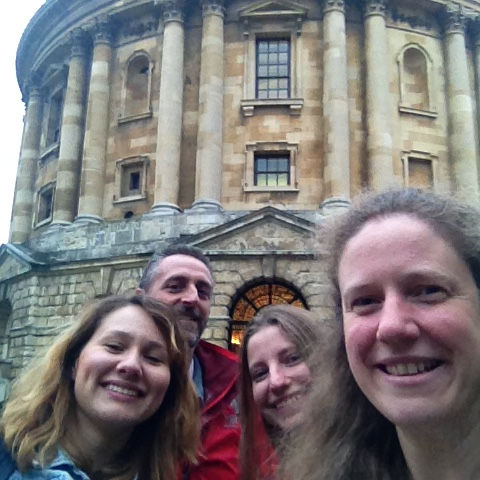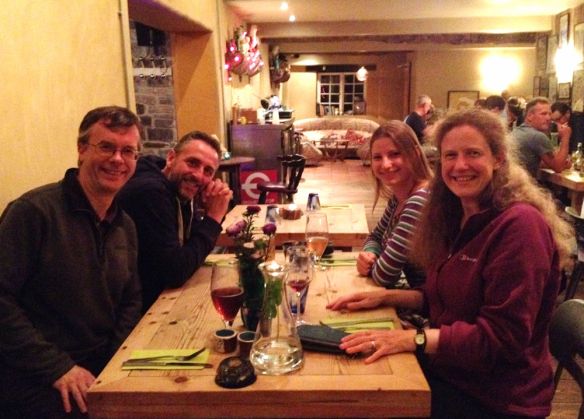Two weeks ago I took part in a workshop on modelling age-related macular degeneration. A group of about 30 mathematicians, scientists and engineers were lucky enough to spend three days in Oxford working on aspects of this condition, including how and why it develops (currently not very well understood) and possible avenues for treatment. Macular degeneration is by far the leading cause of sight loss in this country, with others being glaucoma, cataracts and diabetic retinopathy, and it is worryingly common, with about 600,000 people affected, which is about 1%. Although it can be treated, the current treatments are unpleasant and not always effective so there is good reason for doing research to try to understand what’s going on in the condition.
During the workshop I worked with a group of five others on modelling a layer of tissue at the base of the retina of the eye that might be getting blocked up in patients with macular degeneration. We looked at models of how blockages in this layer could affect the ability of large molecules to pass through it, which is needed for healthy functioning of the eye.

The remains of group 2 at the end of the modelling camp: Jennifer Tweedy (Imperial College London), Dave Smith (University of Birmingham), Phil Luthert (University College London), Moussa Zouache (University College London), Helen Byrne (University of Oxford), (photo by Rosemary Dyson)
In our models, we were trying to simplify and idealise the real situation, in order to end up with some equations that we can use to calculate or predict something useful. The problem is that, in simplifying, one can leave out something important… so it’s a tricky business. Our first attempt was the ping pong balls model, in which we modelled the blockage as solid lumps in the layer. We soon decided that this was the wrong model, which meant we needed to try something else. So next we tried the Swiss cheese model (or at least, that’s what Rich calls it!) in which we modelled the blockage as holes in the layer that gradually close up as stuff is deposited over a lifetime. This produced something that has potential for future development. Meanwhile we were assisted by other group members, who were looking at the problem from alternative angles.

How a block of swiss cheese can help solve problems in the eye (a small portion of our whiteboard at the end of the workshop).
We were put up in magnificent rooms in Wadham College, and, even better, there was also time for a bit of sightseeing in the form of a walking tour around the city centre on the first evening.

Visiting the sights in Oxford: Krystyna, Rodolfo, Mariia and me with the Bodleian Library in the background
After the conference my long-term collaborator Rodolfo Repetto from Italy and his student Mariia Dvoriashyna from Ukraine came back to Shapwick so that we could make some progress with a paper we are writing. We took them to a pub in Godney, which we discovered to be a village that makes Shapwick look well connected!

Enjoying a meal at the Sheppy in Godney: Rich, Rodolfo, Mariia and me
I have attended several mathematical study groups over the years, and even organised one myself in 2009, which was hard work, but rewarding! They are a great way to learn techniques for tackling mathematical modelling problems, as they are one of the few chances we have to work so closely with a range of other people as we develop a new model.
